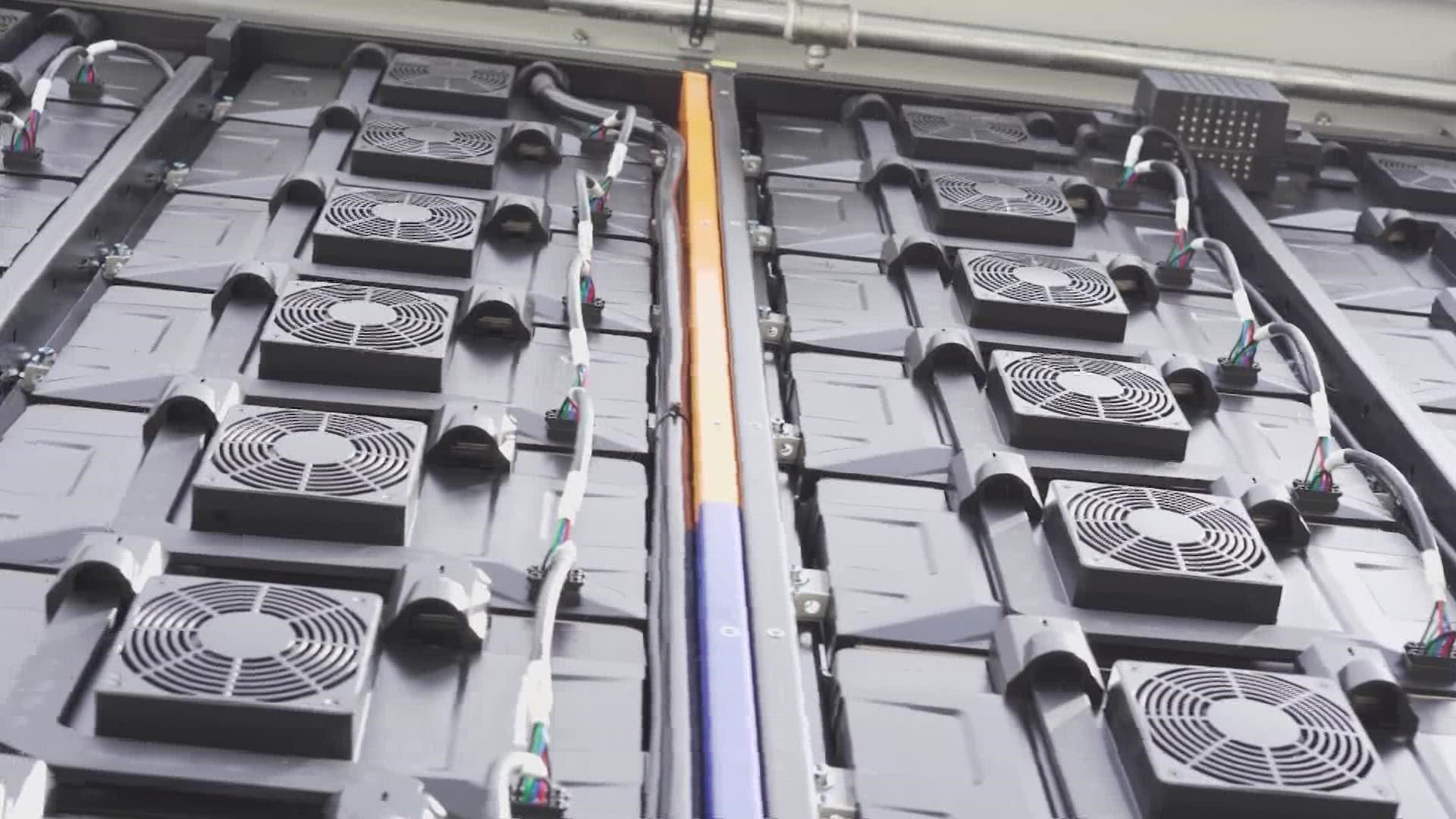DALLAS — Wind and solar power -- renewable energy -- are a super-fast-growing business in Texas. No emissions mean they're essential in the fight against climate change.
The problem
But the problem is the same as you counting on your brother-in-law to pick you up at the airport: Reliability.
While coal and gas emit carbon dioxide -- which is bad because they lead to a warmer climate -- they also provide a constant supply of power all day, every day.
That's good, because you can plan on it.
By comparison, the flow of renewable energy can be a bit of a roller coaster. Some days we get tons of power from the wind and sun. Sometimes, nothing.
The solution
So, what's the solution? How can renewable energy tame its peaks and valleys? The answer is batteries.
Really big batteries.
Let's say the wind is blowing hard at 2 a.m. At that time, everyone's sleeping so there's no one around to use all that electricity and it just goes to waste.
With a battery you can save that juice for the morning, even if the wind has stopped blowing.
“Battery energy storage is going to be a really important part of that because as more solar and wind is built. You need battery energy storage to help fill those gaps,” said Claudia Morrow, who leads the development of renewable energy at Vistra, a major power provider in Texas which just built a large-scale battery farm in Granbury.
The challenge
The technology challenge now is to make low-cost batteries that can hold a charge 10-12 hours, so the flow of energy is reliable all day.
Texas leads the nation in construction of new clean energy sources, with battery storage a growing part of that mix.
But most new installations of lithium ion batteries can only hold one to four hours of charge, not 10 to 12 hours.
“In order for all our power plants to be retired and be able to add new energy resources to transition and, you know, take on and fill that gap, then you likely need them to run a little bit longer during the peak of the day than just 1 to 4 hours,” Morrow said.
What’s next?
So if battery technology isn't there yet, what's next?
Dr. Daniel Kammen is the director of the Renewable and Appropriate Energy Lab at the University of California-Berkeley. He says battery development needs a jumpstart from government investment and favorable policy.
"Well, I think it's absolutely critical, but I don't mean that in a way that says storage is somehow unique. That's exactly the path the so-called learning curve that solar and wind went on. Initially, they were not economic. Now in most of the world, they're the cheapest new forms of generation," he said.
Kammen says, when it comes to cost, energy storage is essentially where solar was about a decade ago and that the price of storage has come down by 90% in the last decade.
Conclusion
Some states, like California, lead the way with policies that encourage a wide variety of battery installations.
And through the recent infrastructure law, the United States Department of Energy is investing three billion dollars to boost production of advanced battery technology.
Why is all this important? Because, this is America. And when we turn on the lights we expect them to always come on.
But if the plan is to run our appliances, cars and just about everything on renewable energy -- and have that energy be reliable -- we're going to need killer batteries. And lots of them.
And we don't have that, yet.

